Spanish missions in California/Gallery: Difference between revisions
imported>Robert A. Estremo No edit summary |
imported>Robert A. Estremo No edit summary |
||
| Line 3: | Line 3: | ||
<gallery perrow=3 widths=300px heights=250px> | <gallery perrow=3 widths=300px heights=250px> | ||
Image:California Indians catching salmon.jpg|{{California Indians catching salmon.jpg/credit}}<br />California Indians catching salmon. | Image:California Indians catching salmon.jpg|{{California Indians catching salmon.jpg/credit}}<br />California Indians catching salmon. | ||
Image:Costanoans fighting Spanish soldier 1791.jpg|{{Costanoans fighting Spanish soldier 1791.jpg/credit}}<br />Costanoans fight a Spanish soldier in 1791. | |||
Image:A native of the Monterey area.jpg|{{A native of the Monterey area.jpg/credit}}<br />A native of the Monterey area. The Costanoan people spoke eight languages, each of which is considered to designate a different tribelet. | |||
Image:Cahuilla Indians c. 1856.jpg|{{Cahuilla Indians c. 1856.jpg/credit}}<br />Cahuilla Indians, ''circa'' 1856. The Cahuilla were called ''támikawicam'' which means "people from the east" by the Gabrieliño. | |||
Image:Diegueno Indians traveling.jpg|{{Diegueno Indians traveling.jpg/credit}}<br />Diegueño Indians traveling. The San Diego area Indians resisted the Spanish and were slow to accept Christianity. | |||
Image:Indian woman gathering acorns.jpg|{{Indian woman gathering acorns.jpg/credit}}<br />An Indian woman gathering acorns. | |||
Image:Indians pounding acorns.jpg|{{Indians pounding acorns.jpg/credit}}<br />Indians pounding acorns. | |||
Image:Miwok making chemuck.jpg|{{Miwok making chemuck.jpg/credit}}<br />Miwok making chemuck, a kind of stew. | |||
Image:Mwok Indian Granaries.jpg|{{Mwok Indian Granaries.jpg/credit}}<br />Acorn granaries in a Miwok village. | |||
Image:Inhabitants of California.jpg|{{Inhabitants of California.jpg/credit}}<br />"Inhabitants of California" by Louis Choris. | |||
Image:Indians Dancing.jpg|{{Indians Dancing.jpg/credit}}<br />Natives dancing at Mission Dolores, 1816. | |||
Image:Mission Delores 1816 Stick Game.jpg|{{Mission Delores 1816 Stick Game.jpg/credit}}<br />Indians play a stick game at Mission Dolores.jpg/credit | |||
Image:CHS-46640.jpg|{{CHS-46640.jpg/credit}}<br/>The [[San Antonio de Pala Asistencia]] (or "Pala Mission" as it is known today) ''circa'' 1900. Pala is architecturally unique among all of the Franciscan missions in that it boasts the only completely freestanding campanile, or "bell tower," in all of Alta California. It is also the only outpost that has ministered without interruption to the Mission Indians for whom it was originally built since its inception, and is the only "sub-mission" still intact.<ref name="carillo11">Carillo, p. 11</ref> | Image:CHS-46640.jpg|{{CHS-46640.jpg/credit}}<br/>The [[San Antonio de Pala Asistencia]] (or "Pala Mission" as it is known today) ''circa'' 1900. Pala is architecturally unique among all of the Franciscan missions in that it boasts the only completely freestanding campanile, or "bell tower," in all of Alta California. It is also the only outpost that has ministered without interruption to the Mission Indians for whom it was originally built since its inception, and is the only "sub-mission" still intact.<ref name="carillo11">Carillo, p. 11</ref> | ||
Image:CHS-2097.jpg|{{CHS-2097.jpg/credit}}<br/>[[Mission San Luis Rey de Francia]] is home to with the first Peruvian Pepper Tree (''Schinus molle'') planted in California in 1830, visible at right behind the arches in the above photograph (taken ''circa'' 1900).<ref>young, p. 18</ref> | Image:CHS-2097.jpg|{{CHS-2097.jpg/credit}}<br/>[[Mission San Luis Rey de Francia]] is home to with the first Peruvian Pepper Tree (''Schinus molle'') planted in California in 1830, visible at right behind the arches in the above photograph (taken ''circa'' 1900).<ref>young, p. 18</ref> | ||
Revision as of 00:20, 30 October 2012
(PD) Photo: Charles C. Pierce
The San Antonio de Pala Asistencia (or "Pala Mission" as it is known today) circa 1900. Pala is architecturally unique among all of the Franciscan missions in that it boasts the only completely freestanding campanile, or "bell tower," in all of Alta California. It is also the only outpost that has ministered without interruption to the Mission Indians for whom it was originally built since its inception, and is the only "sub-mission" still intact.[1](PD) Photo: Charles C. Pierce
Mission San Luis Rey de Francia is home to with the first Peruvian Pepper Tree (Schinus molle) planted in California in 1830, visible at right behind the arches in the above photograph (taken circa 1900).[2](PD) Photo: Joe Radigan MACM / United States Navy
Between 1944 and 1945, twenty-seven Mission Buenaventura-class fleet oilers were built (two additional vessels were converted to distilling ships after their keels had been laid).[3] Many of the ships, such as the USNS Mission Capistrano (T-AO-112) shown above, served with the United States Navy during World War II and on into the Cold War.
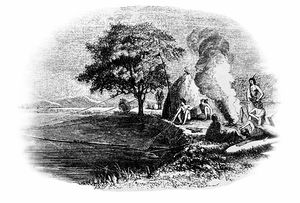
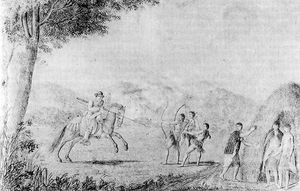
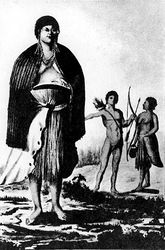
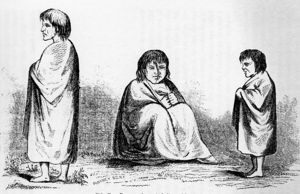
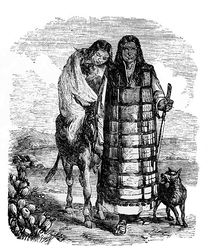

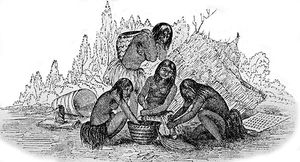
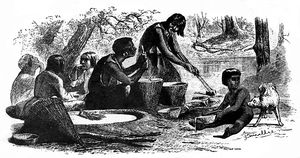
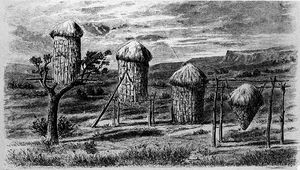
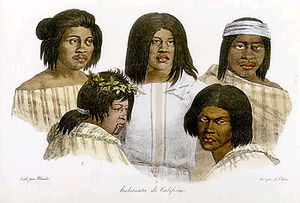
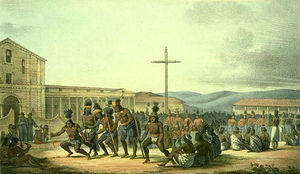
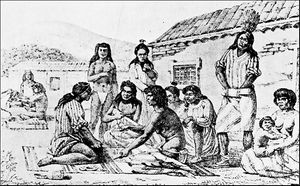
![(PD) Photo: Charles C. Pierce The San Antonio de Pala Asistencia (or "Pala Mission" as it is known today) circa 1900. Pala is architecturally unique among all of the Franciscan missions in that it boasts the only completely freestanding campanile, or "bell tower," in all of Alta California. It is also the only outpost that has ministered without interruption to the Mission Indians for whom it was originally built since its inception, and is the only "sub-mission" still intact.[1]](/wiki/images/thumb/7/7a/CHS-46640.jpg/300px-CHS-46640.jpg)
![(PD) Photo: Charles C. Pierce Mission San Luis Rey de Francia is home to with the first Peruvian Pepper Tree (Schinus molle) planted in California in 1830, visible at right behind the arches in the above photograph (taken circa 1900).[2]](/wiki/images/thumb/f/fa/CHS-2097.jpg/199px-CHS-2097.jpg)
![(PD) Photo: Joe Radigan MACM / United States Navy Between 1944 and 1945, twenty-seven Mission Buenaventura-class fleet oilers were built (two additional vessels were converted to distilling ships after their keels had been laid).[3] Many of the ships, such as the USNS Mission Capistrano (T-AO-112) shown above, served with the United States Navy during World War II and on into the Cold War.](/wiki/images/thumb/1/11/USNS_Mission_Capistrano.jpg/300px-USNS_Mission_Capistrano.jpg)